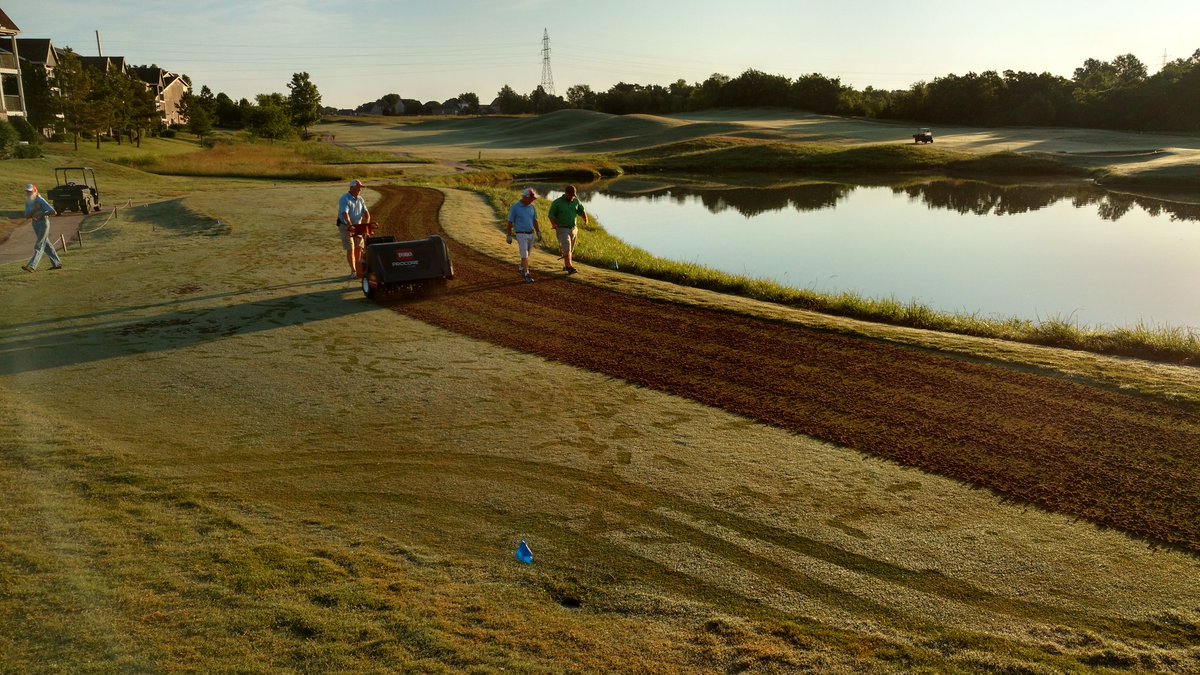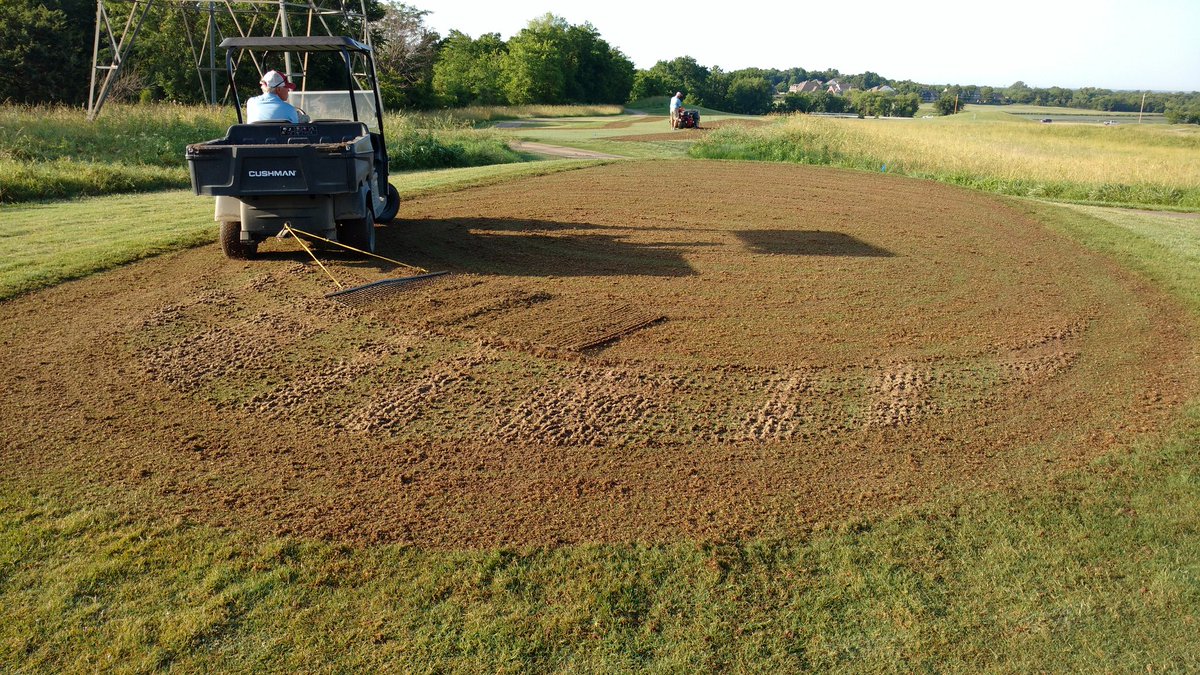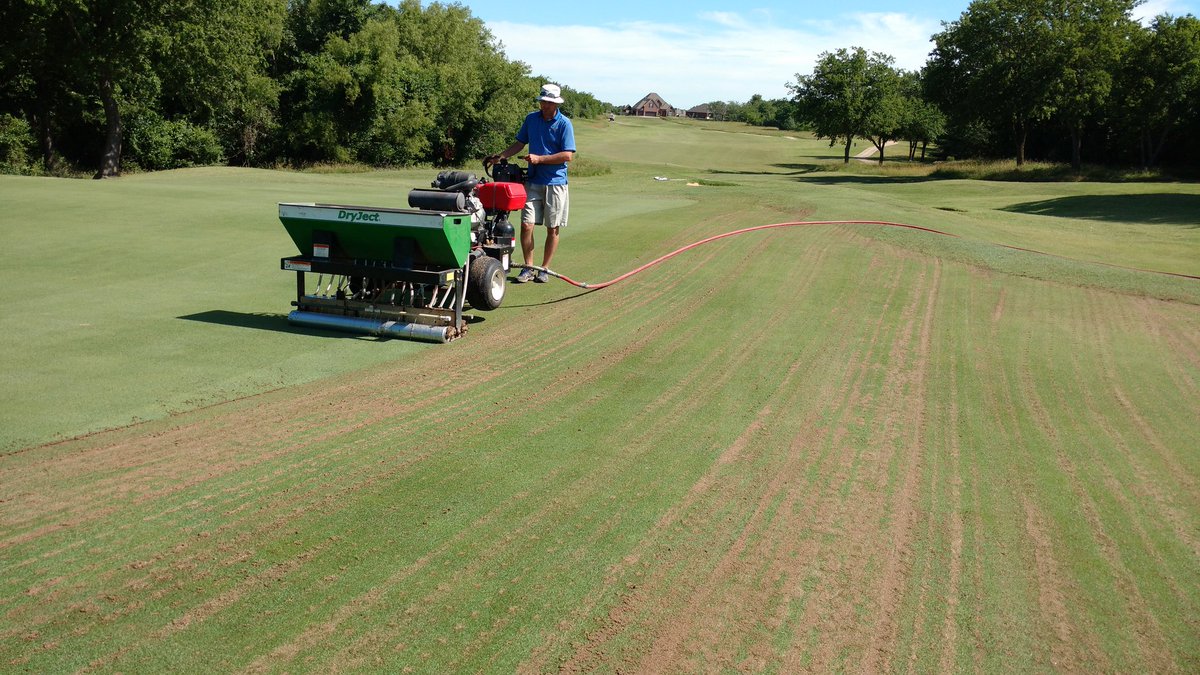
Although summer hasn't officially begun yet, the hot weather pattern has already set in and in response, the Bermuda throughout the golf course has begun to grow aggressively. Once Bermuda begins to grow aggressively, it is time to begin cultural practices such as core aeration and slicing. These practices alleviate compaction from cart traffic and maintenance equipment, improve soil oxygen and allow for deeper rooting.
Last Tuesday the staff began both solid-tine slicing fairways and core aerating tees. As stated above, both of these practices will help alleviate compaction and help irrigation penetrate into the soil. However, solid-tining does not remove any excessive thatch that might have accumulated. We currently do not have the proper equipment to pull a core on fairways so this is the next best thing. Once the fairway is sliced, it is mowed and all debris is blown into the rough. The surface that remains is very playable. The brown turf immediately around each slice mark is temporary and the turf will recover in a week or so.

The staff was also busy pulling a core on tees. This process inherently creates more of a mess and requires more staff to clean up and get ready for play. As you can see from the picture on the right, quite a bit of soil and thatch is brought up to the surface. Once all the cores have been pulled, a drag mat is used to separate the soil from the thatch. The soil reincorporates into the turf while the thatch is easily blown off using backpack blowers. This process, although messy and inconvenient, is vital to the long term healthy of our Bermuda tees. Without this process, our tees would be thin, discolored and would not meet the expectations of our golfers.



